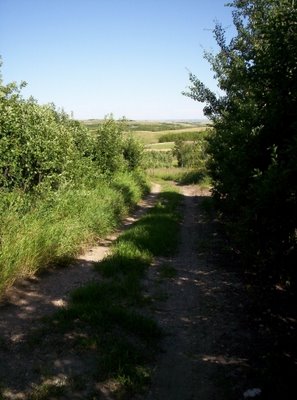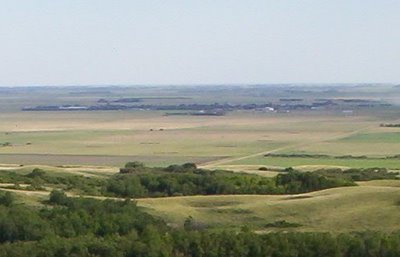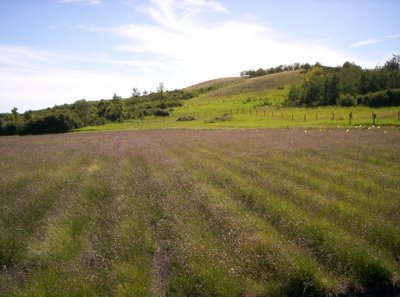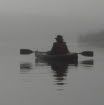why mulch?
4 weeks ago
The gist of things here in my hometown, set within the arcs of things in the wider world, all from my uniquely biased point of view. Feel free to extend the horizons with your comments.
 Taking a cue from Madcap Mum, for comparison purposes: here are some views from just outside the farm gate.
Taking a cue from Madcap Mum, for comparison purposes: here are some views from just outside the farm gate. I took this view for granted.
I took this view for granted. It's just that band of dark green with some buildings showing in it, stretching across most of the width of this view of the distant "flats." I sometimes worry if I'll offend someone by saying "the flats," but our Arcola-Kisbey history book is subtitled "Mountain Hills to Prairie Flats," so I guess it's okay.
It's just that band of dark green with some buildings showing in it, stretching across most of the width of this view of the distant "flats." I sometimes worry if I'll offend someone by saying "the flats," but our Arcola-Kisbey history book is subtitled "Mountain Hills to Prairie Flats," so I guess it's okay. And if you're thinking that's not steep, try climbing it. Or try browsing through some pictures of foothills. Most of the steeper slopes that you see are supported by rock formations. This is just glacial till. Here is a view of the "South Slopes" from the meadow below, looking west across their face.
And if you're thinking that's not steep, try climbing it. Or try browsing through some pictures of foothills. Most of the steeper slopes that you see are supported by rock formations. This is just glacial till. Here is a view of the "South Slopes" from the meadow below, looking west across their face. If geology and ecology and botany bore you, skip along to some more pictures below.
If geology and ecology and botany bore you, skip along to some more pictures below. And on the other side of the meadow, south of those "South Slopes," we have "The Big Woods."
And on the other side of the meadow, south of those "South Slopes," we have "The Big Woods." It's not the deepest, darkest view I could get, that's for sure. I love to thread my way through the bush and peer through beneath the understory for tiny flowers and mushrooms and such, but when it comes to taking pictures, I'm always drawn to the light. Besides, I was in the perpetual hurry that seems to haunt me these days, so I mostly kept to the not-so-natural trails.
It's not the deepest, darkest view I could get, that's for sure. I love to thread my way through the bush and peer through beneath the understory for tiny flowers and mushrooms and such, but when it comes to taking pictures, I'm always drawn to the light. Besides, I was in the perpetual hurry that seems to haunt me these days, so I mostly kept to the not-so-natural trails. The cattle had just been put into this pasture the day I rambled through it, so they hadn't grazed and trampled out the trails yet. Give them a few days. Then you can breeze through without having to dodge the stinging nettles, and maybe come away with only a couple of woodticks.
The cattle had just been put into this pasture the day I rambled through it, so they hadn't grazed and trampled out the trails yet. Give them a few days. Then you can breeze through without having to dodge the stinging nettles, and maybe come away with only a couple of woodticks. This is a view from the upper slope of a ravine at the west end of the "South Slopes." I didn't go down to the bottom. You can see a little bit into the shadows, but we're looking mostly at the crowns of the trees. The ravines are a different world. If it's hard work climbing the South Slopes, it's an ordeal climbing straight up through the tangle of thick underbrush on the side of one of these ravines. I've only done it a few times. Usually I seek out a good path before I start up. There is always a path along the bottom, where the cattle and deer and elk and moose follow the way of least resistance. There is good grazing and browsing there, too, even when the hills are dry, and in some of the deeper places there are springs.
This is a view from the upper slope of a ravine at the west end of the "South Slopes." I didn't go down to the bottom. You can see a little bit into the shadows, but we're looking mostly at the crowns of the trees. The ravines are a different world. If it's hard work climbing the South Slopes, it's an ordeal climbing straight up through the tangle of thick underbrush on the side of one of these ravines. I've only done it a few times. Usually I seek out a good path before I start up. There is always a path along the bottom, where the cattle and deer and elk and moose follow the way of least resistance. There is good grazing and browsing there, too, even when the hills are dry, and in some of the deeper places there are springs. Back up at the top of that slope, looking southwest, you can see the ravine running away through the center of the photo towards the flats. In the middle distance at the right side of the photo, you can see an area of more uniform grass cover. Again, it's an old field, now in tame pasture. Notice the contrast with the more diverse vegetation east of the ravine.
Back up at the top of that slope, looking southwest, you can see the ravine running away through the center of the photo towards the flats. In the middle distance at the right side of the photo, you can see an area of more uniform grass cover. Again, it's an old field, now in tame pasture. Notice the contrast with the more diverse vegetation east of the ravine. Oh, I still have more pictures, but it's time to go.
Oh, I still have more pictures, but it's time to go.
As a student, I'll be in the final show (gulp) so come clap along for me! I dare ya to try to make me laugh . . .Just some information about a concert series in the Park that you might be interested in. We'd love for you to come and join us, and to help us spread the word.The Kenosee Lake Kitchen Party is presenting a concert series featuring renowned musicians between August 14 - 18, 2006 at the Kenosee Boys' and Girls' camp at 7pm.Cost is $5 for non-camp participants, and spectators should bring a lawnchair.Children under 12 are free.Concerts will be followed by a jam session, and spectators are welcome to bring instruments and join in as they pleaseThe concert lineup is as follows:Monday, August 14 at 7pm: J.J. Guy (fiddler) Ray Bell (guitarist/singer) Shamma Sabir (fiddler: eldest member of the Sabir Sisters, and a Grand Master finalist. She's also a dynamic performer!)Tuesday, August 15 at 7pm: Trent Bruner (pianist from Norway), Cammy Romanuck (fiddler.. provincial Grand Champion and 5th place winner in Canadian Grand Masters), and Anthony Bzdell (guitarist, singer and key member of the Rotators)Wednesday, August 16th at 7pm: Lucas Welsh (fiddler, one time Provincial Grand Champion and accomplished bluegrass guitarist, singer, mandolin player as well!) Shannon Shakotko (pianist / singer with a powerful voice) John Arcand (world-renowned fiddler and the master of the Metis Fiddle)Thursday, August 17th at 7pm: Camp Pig 'n Whistle: Band scramble and talent show, followed by square dancing with an accomplished callerFriday, August 18th at 7pm, Students' final show, instructors' performance, old tyme family dance with cash bar.Hope this helps with your calendar! The music this week will be phenomenal!...Michele Amy
I don't argue with the science that all of us - as we exhale, as the population grows, as there are more vehicles on the streets and more carbons produced - that we contribute to global warming.I wonder how terrifying it was for him to admit that to himself, given that he thinks his own breath is part of the problem. Really, Mr. Premier. The natural functioning of a human body only contributes to global warming after breathing stops. Up until then, you're a carbon sink. Carbon in, when you eat - remember carbohydrates? Carbon out, when you breathe. More carbon in than out, as you grow. Wait - it just occurred to me - dieting contributes to global warming! Somebody call Hollywood!
